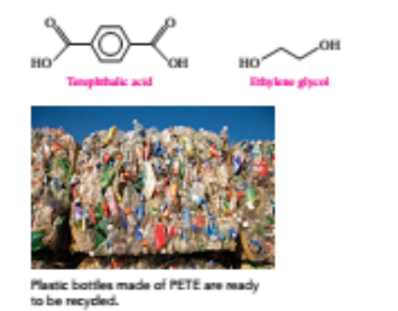The plastic known as PETE (Polytethylenetetraphathalate) is used to make plastic bottles and containers for shampoo and dishwashing agents. PETE is made of terephthalic acid and ethylene glycol liquids. Today PETE is the most widely recycled plastic. In one year 1.5*109 lb of PETE is recycled. After it is separated from other plastics, PETE can be used in polyester fabrics, door mats, and tennis ball containers. The density of PETE is 1.38 g/mL.

a. Draw the line angle formula for the center formed from one molecule of terephthalic acid and one molecule of ethylene glycol.
b. Draw the line angle formula for the product formed when a second molecule of ethylene glycol reacts with the enter you draw in part a.
c. How many kilograms of PETE is recycled in one year?
d. What volume, in liters of PETE is recycled in one year?
e. Suppose a landfill holds 2.7*107L of recycled PETE. If all the PETE that is recycled in one year were placed instead in landfills, how many would fir?


